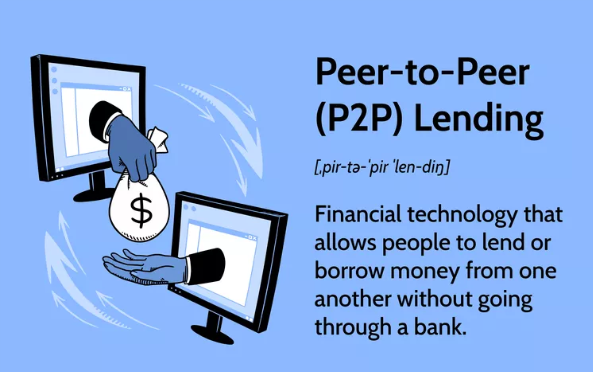Peer-to-Peer Lending: How It Works and What to Watch Out For
In recent years, peer-to-peer (P2P) lending has emerged as an alternative to traditional bank loans, giving borrowers and investors a way to connect directly usually through an online platform.
For some, it’s a faster, more flexible financing option; for others, it’s an exciting investment opportunity. But, like all financial tools, it comes with both benefits and risks.
Let’s break down how P2P lending works and the key things you need to watch out for before getting involved.
What Is Peer-to-Peer Lending?
Peer-to-peer lending is a method of borrowing and lending money without going through a traditional bank. Instead, you use an online marketplace that matches borrowers who need funds with investors willing to lend.
Think of it as a digital meeting place for people who have money and people who need it—with the platform acting as the middleman to handle applications, credit checks, payments, and contracts.
How Peer-to-Peer Lending Works
1. Borrower Application
A borrower applies for a loan on a P2P platform, providing personal details, income information, and the desired loan amount.
2. Credit Assessment
The platform reviews the borrower’s creditworthiness and assigns a risk grade, which affects the interest rate.
3. Funding by Investors
Multiple investors can fund portions of the loan until it’s fully funded. This spreads risk among many lenders.
4. Loan Issuance
Once funded, the borrower receives the money and begins making monthly repayments (principal + interest) to the platform.
5. Repayments to Investors
The platform collects payments from the borrower and distributes them to the investors, keeping a small fee.
Pros of Peer-to-Peer Lending
For Borrowers
-
Potentially Lower Rates – Especially if you have good credit but don’t qualify for the best bank rates.
-
Fast Approval – Some P2P loans are funded within days.
-
Flexible Loan Amounts – Borrow smaller amounts than banks typically offer.
For Investors
-
Higher Returns – Can be more profitable than savings accounts or CDs.
-
Diversification – Spread investments across many loans.
-
Direct Impact – Fund individuals or small businesses directly.
Risks and What to Watch Out For
For Borrowers
-
Higher Rates for Bad Credit – If your credit score is low, rates may be higher than bank loans.
-
Fees – Watch for origination, late payment, and service fees.
-
Not Always Long-Term – Loan terms are usually shorter than mortgages or large business loans.
For Investors
-
Default Risk – If the borrower can’t repay, you could lose your money.
-
No Government Insurance – Unlike bank deposits, your investment isn’t protected by FDIC insurance.
-
Platform Risk – If the P2P platform goes out of business, it could disrupt repayments.
Who Should Use Peer-to-Peer Lending?
-
Borrowers – Good option if you have decent credit, need money quickly, and want an alternative to bank loans or credit cards.
-
Investors – Suitable for those willing to take on some risk in exchange for potentially higher returns and who can diversify across multiple loans.
Bottom Line
Peer-to-peer lending can be a win-win for both borrowers and investors—but it’s not without risk.
Borrowers should shop around and compare rates with banks and credit unions.
Investors should diversify heavily and be prepared for the possibility of defaults.
Done right, P2P lending offers a modern, flexible way to connect people who have money with those who need it—just be sure to read the fine print before you jump in.


